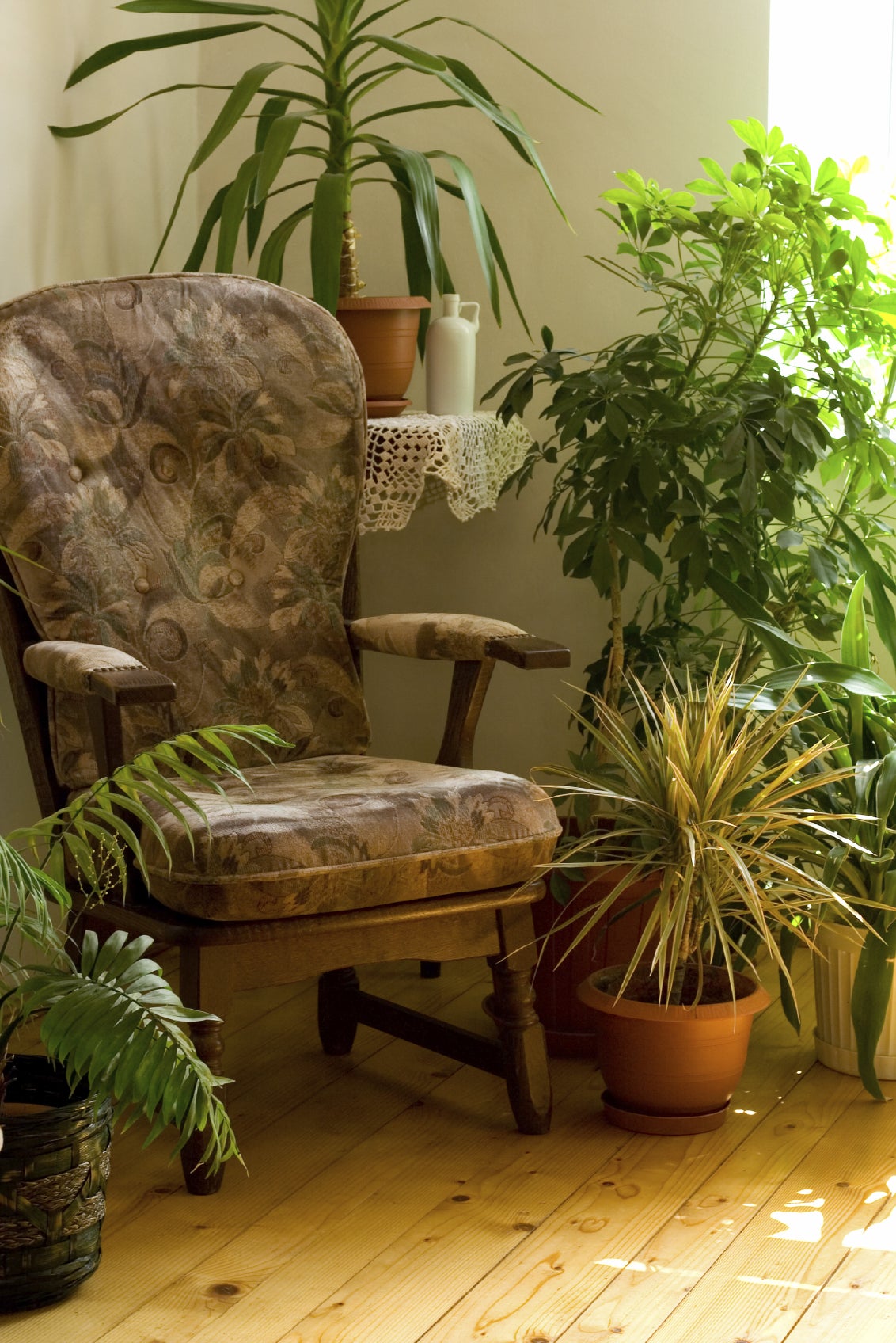Foliage Plants For Your Home


Foliage plants that you grow indoors are mostly from tropical or arid regions and must adapt to less than ideal conditions in your home or office. Your challenge is to know the plant's environmental needs and meet them. The environmental factors placed upon the plant and your maintenance practices will contribute to the health or decline of the plant, depending on how well you do.
Choosing Foliage Plants for Your Home
In choosing your plants, consider the location's environment. Determine whether a particular plant will only survive or thrive in that environment. Go to your library and find references of the specific care of plants being considered for the indoor environment. It is important to begin with good quality, healthy, pest-free plants. Make sure leaves possess good color for the species, with no brown tips or margins. Look for pests and signs of disease.
Environmental Conditions for Foliage Plants Indoors
Lighting
How much or how little light in the environment often determines whether the plant will actively grow or simply survive. Characteristics of light to consider include intensity, quality, and duration. Keep in mind that a southern exposure indoors typically provides the greatest light intensity, then western, eastern, and northern. Plants requiring more light usually have variegated foliage. This is because they have less chlorophyll and therefore, require more light to achieve the same photosynthesis as a plant with green foliage. If light is insufficient, color variegation may be lost. Flowering plants also require higher light intensity. As winter approaches, light intensity and duration will diminish. A plant that grew well in an eastern exposure in the summer may require a southern exposure in the winter. Move plants to other locations seasonally if needed. Quality of light refers to the spectrum or colors available; sunlight contains all colors. Plants utilize all colors in photosynthesis. An incandescent light bulb gives off limited colors and is not acceptable as an indoor lighting source for most plants. To grow plants under artificial fluorescent light, most indoor gardeners combine a cool and warm tube in a fixture to provide light of good quality for many interior plants. Duration refers to the length of light exposure. A daily exposure to light, preferably 8 to 16 hours, is needed for plant processes. Symptoms of insufficient duration are similar to those of low light intensity: small leaves, spindly stems, and older leaf drop.
Temperature
The best temperature range for most interior foliage plants is between 60 and 80 degrees F. (16-27 C.) These temperatures are similar to that found in the understory of a tropical forest. Chilling injury occurs below 50 degrees F. (10 C.) for most tropical plants. Temperatures in the home and office can be quite variable, changing daily or seasonally. Remember that southern and western exposures are warm because of sunlight, while eastern and northern are moderate or cool. Avoid locating plants on cold window sills, or where there are cold or hot drafts from opening doors and heating or air conditioning vents. Leaf spots, blotches, downward curled foliage, and slowed growth are all signs of bad temperatures. Temperatures that are too high can cause yellowish green foliage, which may have brown, dry edges or tips and spindly growth. Insect, mite, and disease problems may develop quickly under warm conditions as well. You need to be careful.
Humidity
Remember that tropical foliage plants thrive in their native environments where relative humidity is often 80 percent or greater. An average home may have relative humidity as low as 35 percent up to about 60 percent; this may drop below 20 percent in heated homes during winter. Low humidity may cause brown or scorched leaf tips. You can try to raise the humidity indoors by grouping plants together. That sometimes helps. Also, if you use a room or furnace humidifier, you can increase the humidity. Be sure to water properly and avoid drafts and high temperatures. A pebble tray may also work; layer pebbles in a tray and fill with water to just the top of the pebbles. Set pots on the pebbles, just above water level.
Soil
Root health is vital to the survival of the plant. The plant's container and the growing mix affect the root system and the overall health of the plant. Roots serve to anchor the plant in the container and to absorb water and nutrients. A plant's root system has to have oxygen in order to function properly. Without it, the plant will die. Make sure to have the proper soil mix for each plant as well. A good mix won't break down or degrade over time. Be sure to use a mixture of particle sizes so there's good drainage and aeration for the plant's roots. Most plants do well in a mix containing one to two parts potting soil, one to two parts moistened peat moss, and one part coarse sand. Native soil from the garden can be used in a mix if it's pasteurized. It's not hard to take care of foliage plants. Just remember that if they are tropical in variety, it might take a little more than just a simple watering once in a while to carry them through.
Sign up for the Gardening Know How newsletter today and receive a free copy of our e-book "How to Grow Delicious Tomatoes".

Heather Rhoades founded Gardening Know How in 2007. She holds degrees from Cleveland State University and Northern Kentucky University. She is an avid gardener with a passion for community, and is a recipient of the Master Gardeners of Ohio Lifetime Achievement Award.